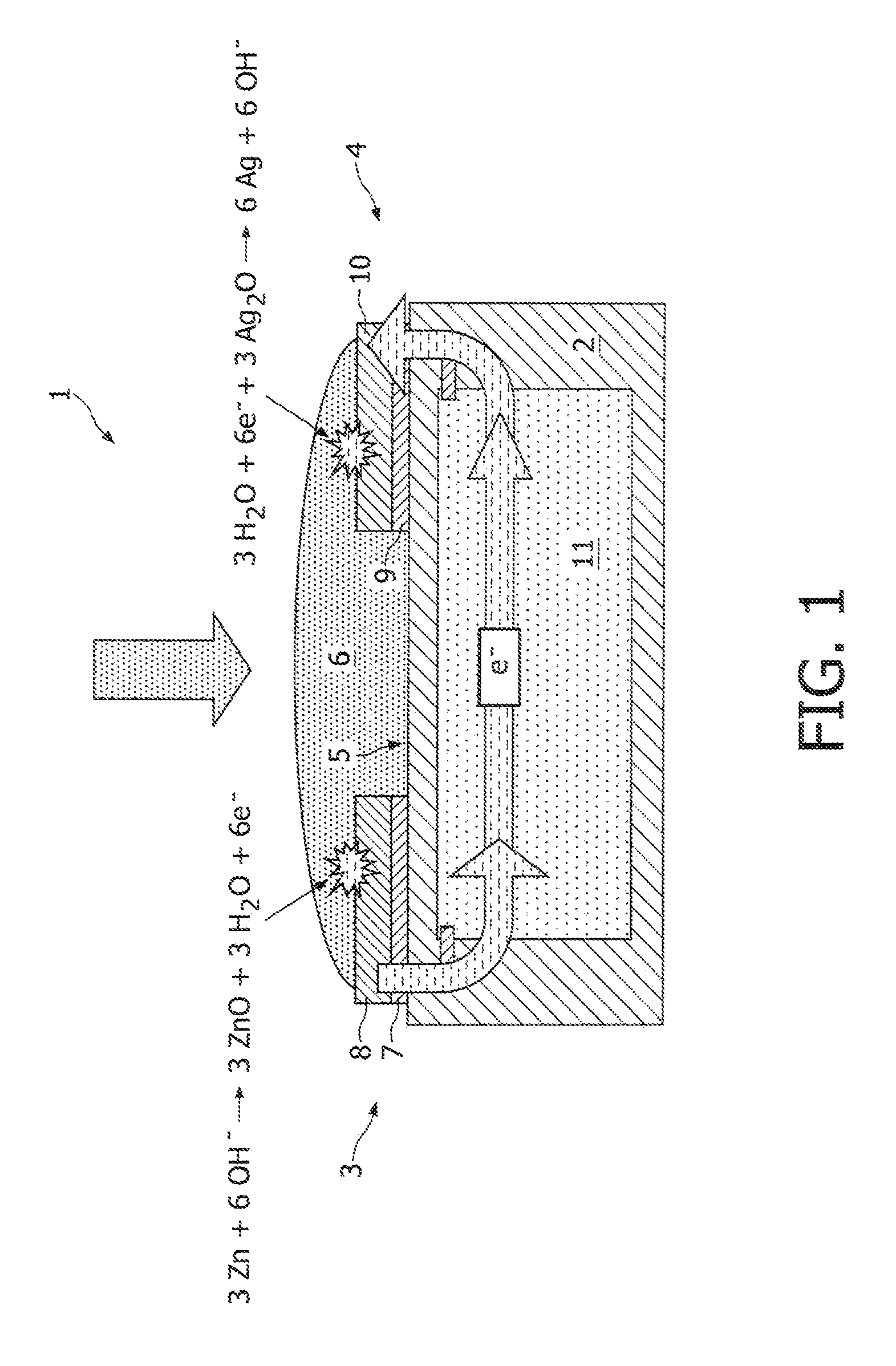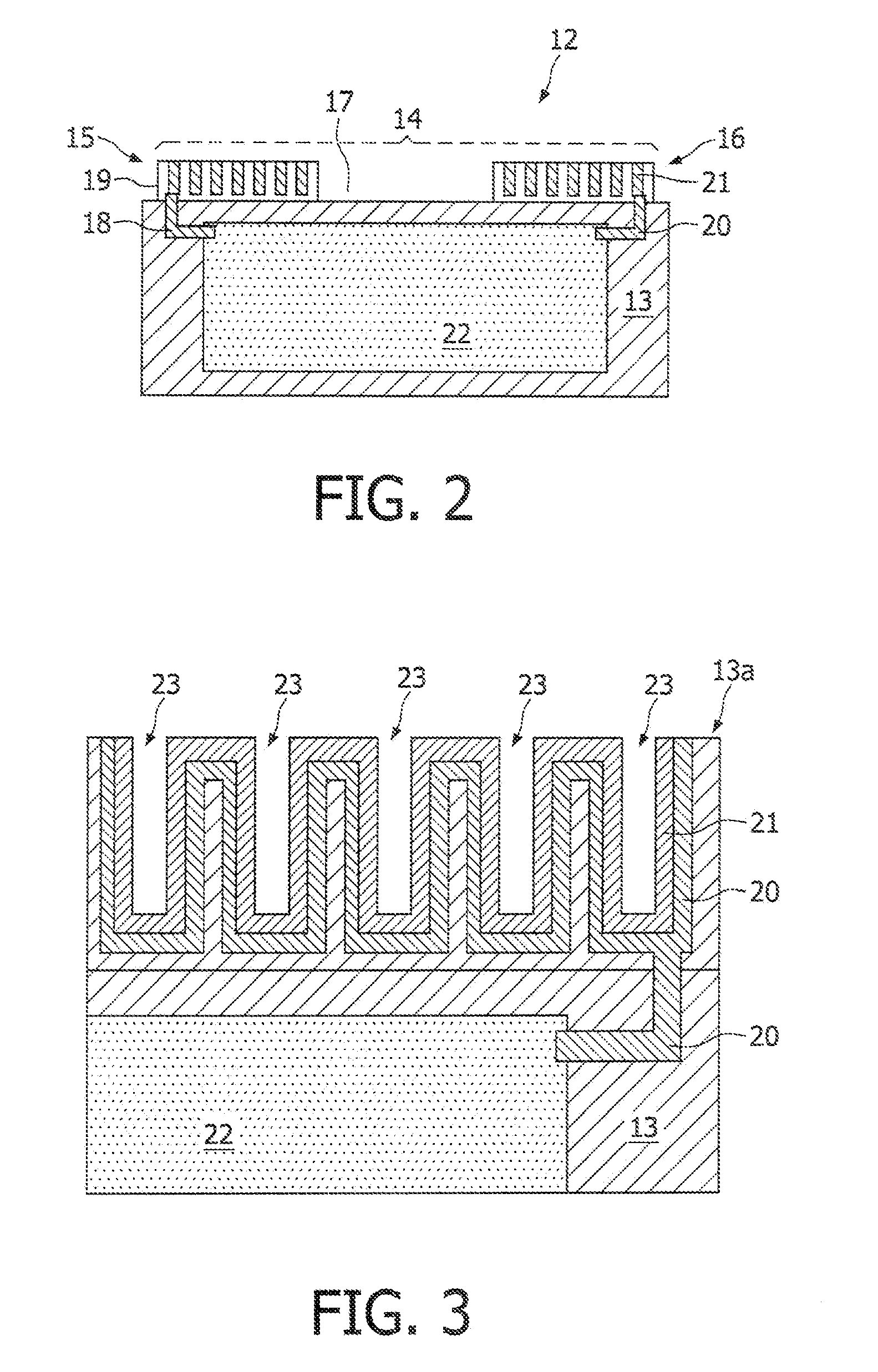Electrochemical energy source and electronic device
a technology of electronic devices and energy sources, applied in the direction of electrochemical generators, deferred-action cells, cell components, etc., can solve the problems of relatively poor battery performance and limited size of electrodes, and achieve the effects of improving the rate capacity of energy sources, increasing the surface area per footprint of electrodes, and increasing the contact surfa
- Summary
- Abstract
- Description
- Claims
- Application Information
AI Technical Summary
Benefits of technology
Problems solved by technology
Method used
Image
Examples
Embodiment Construction
[0020]FIG. 1 shows a schematic cross section of a conventional reserve-type energy source 1. The energy source 1 comprises a substrate 2 onto which a planar negative electrode 3 and a planar positive electrode 4 are deposited. Between both planar electrodes 3, 4 an electrolyte chamber 5 is provided which is filled with a liquid electrolyte 6, such as saliva, in this example of the prior art. The first electrode 3 comprises a (first) current collector 7, and an anode 8 deposited on top of the current collector 7. The second electrode 4 comprises a (second) current collector 9, and a cathode 10 deposited on top of the current collector 9. In this example, the anode 8 is made of zinc, while the cathode 10 is made of silver oxide. By providing the electrolyte chamber 5 with electrolyte 6 an electrochemical reaction will be initiated both at the anode 8 and at the cathode 10 as shown. The electrical energy generated by the energy source 1 is used for powering an electronic device 11 inco...
PUM
| Property | Measurement | Unit |
|---|---|---|
| electrochemical energy | aaaaa | aaaaa |
| surface area | aaaaa | aaaaa |
| size | aaaaa | aaaaa |
Abstract
Description
Claims
Application Information
 Login to View More
Login to View More - R&D
- Intellectual Property
- Life Sciences
- Materials
- Tech Scout
- Unparalleled Data Quality
- Higher Quality Content
- 60% Fewer Hallucinations
Browse by: Latest US Patents, China's latest patents, Technical Efficacy Thesaurus, Application Domain, Technology Topic, Popular Technical Reports.
© 2025 PatSnap. All rights reserved.Legal|Privacy policy|Modern Slavery Act Transparency Statement|Sitemap|About US| Contact US: help@patsnap.com



